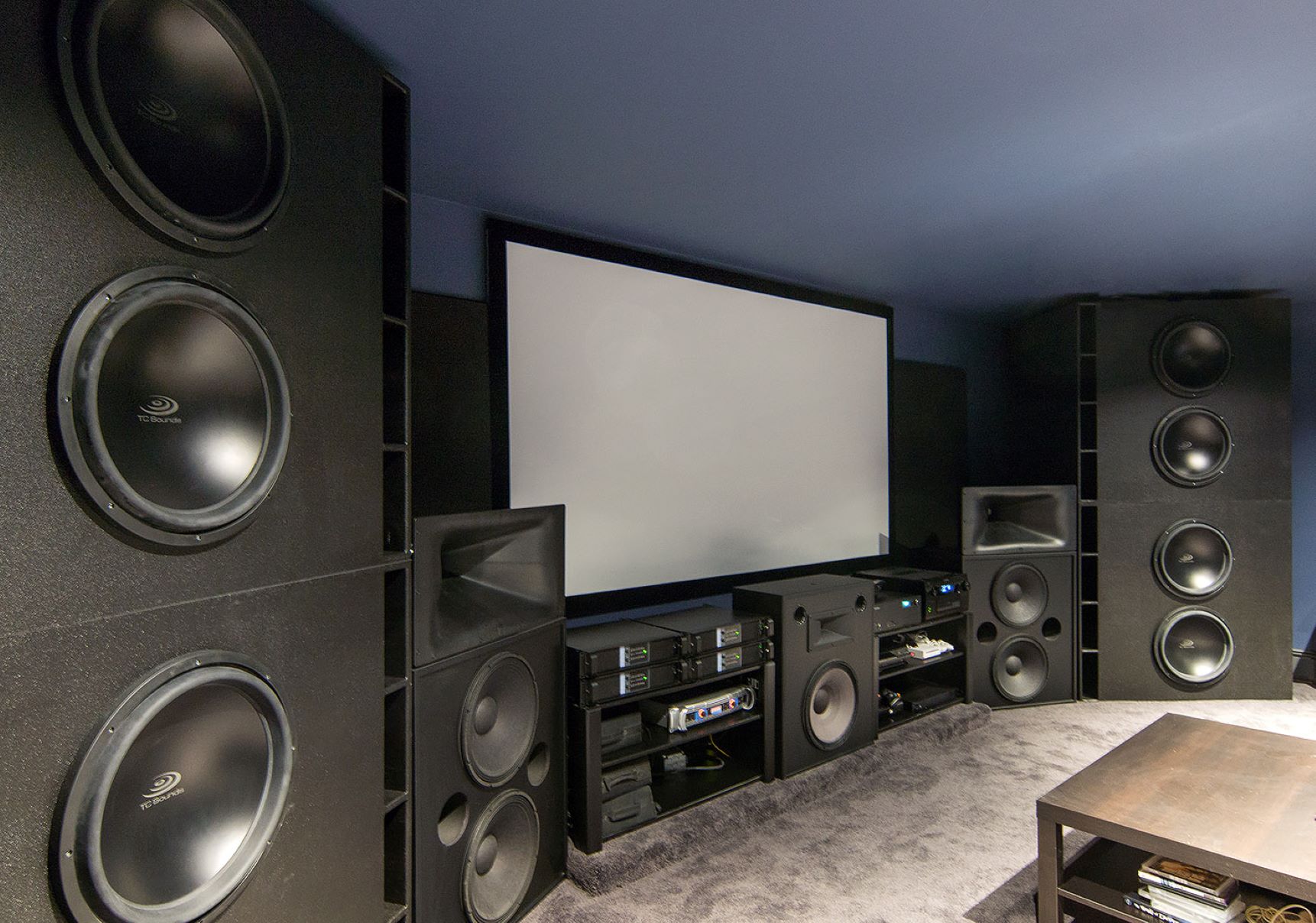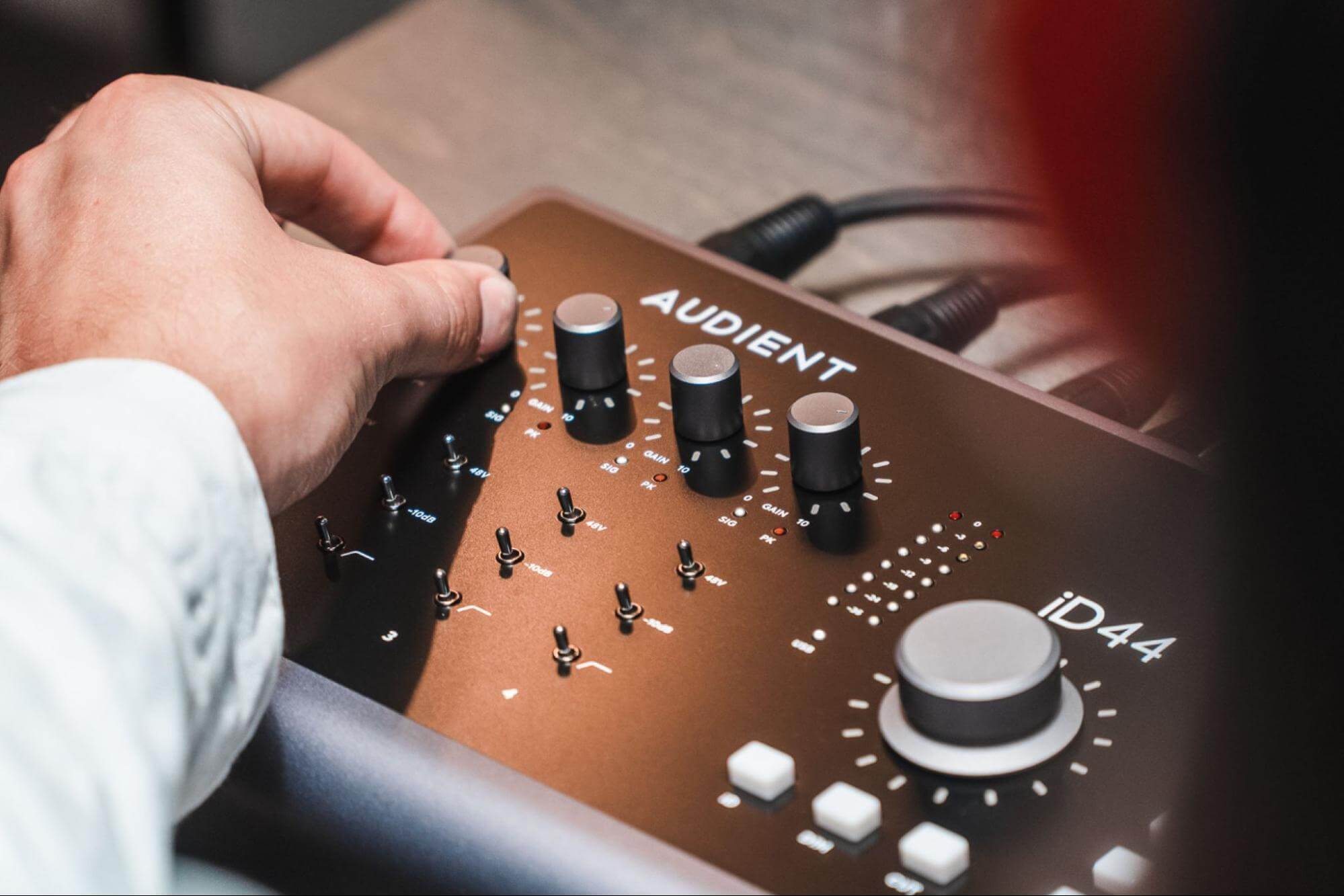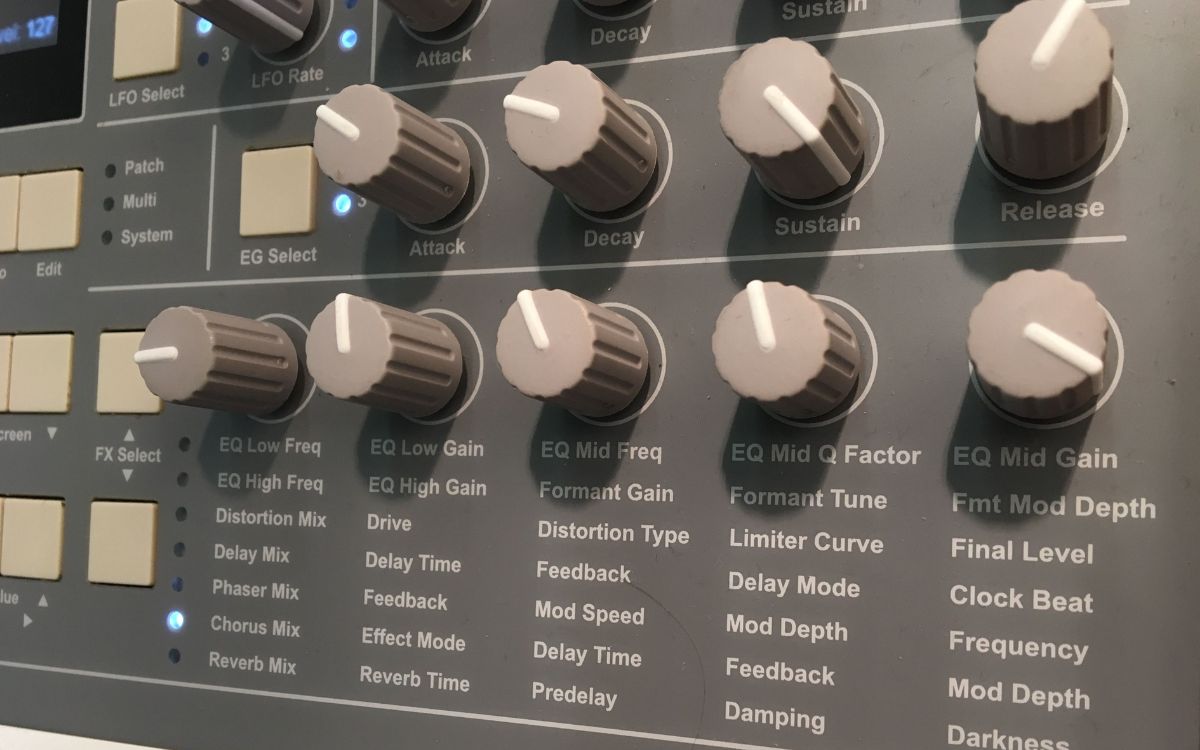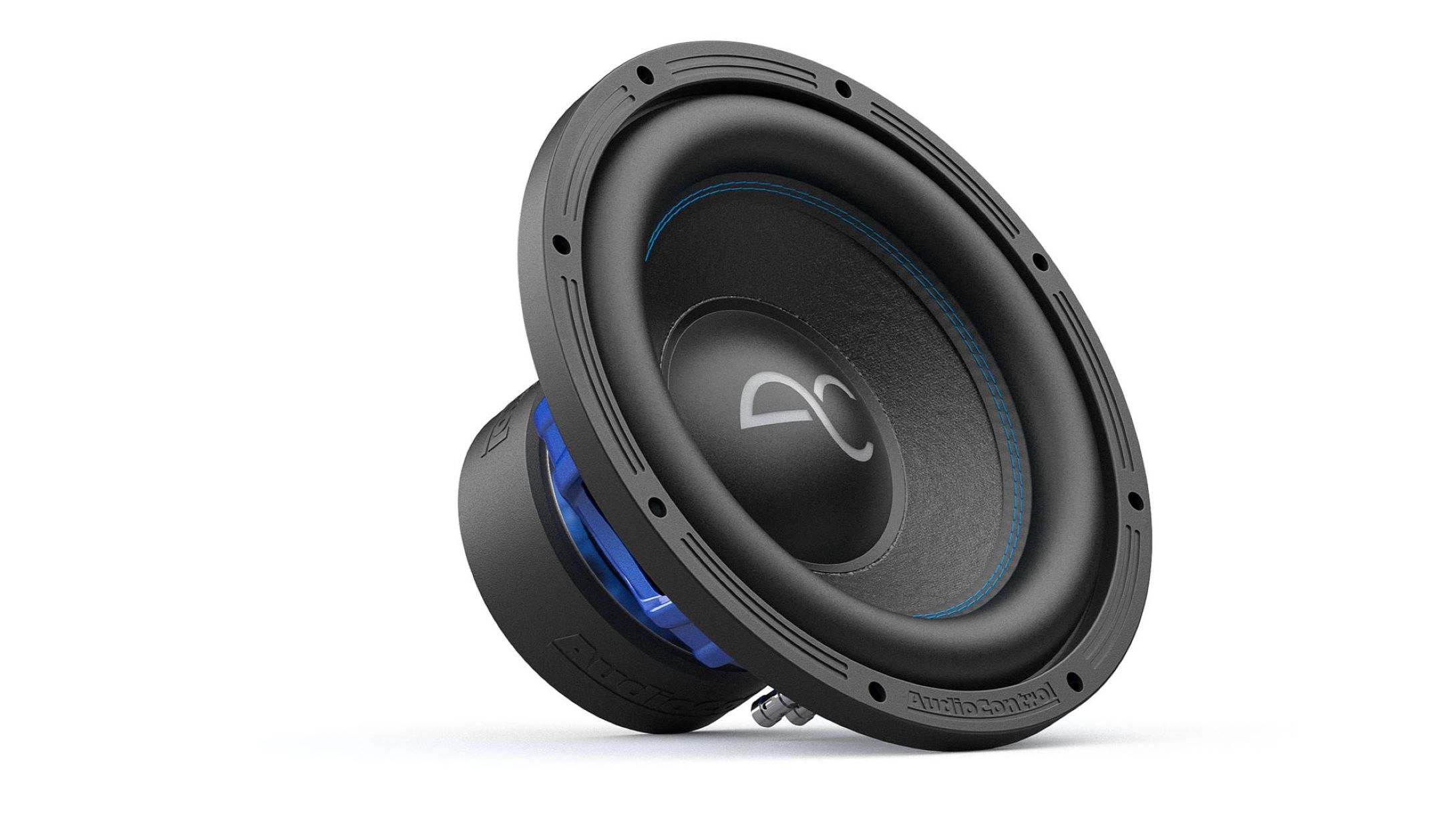Home>Devices & Equipment>Subwoofer>What To Look For In A Subwoofer


Subwoofer
What To Look For In A Subwoofer
Published: January 22, 2024
Learn about the key factors to consider when choosing a subwoofer for your audio system. Find the perfect subwoofer to enhance your sound quality and bass experience.
(Many of the links in this article redirect to a specific reviewed product. Your purchase of these products through affiliate links helps to generate commission for AudioLover.com, at no extra cost. Learn more)
Table of Contents
Introduction
When it comes to enhancing the audio experience, a high-quality subwoofer can make all the difference. Whether you’re a music enthusiast, a movie buff, or a gamer, a subwoofer can add depth and richness to the sound, bringing it to life in a way that regular speakers simply can’t achieve. But with so many options available in the market, finding the right subwoofer for your needs can be a daunting task.
In this article, we will explore the key factors to consider when purchasing a subwoofer. From frequency response and power handling to enclosure type and size, understanding these aspects will empower you to make an informed decision and ensure that you get the best subwoofer that suits your requirements.
So, whether you’re setting up a home theater system, building a dedicated audio setup, or simply looking to upgrade your existing sound system, read on to discover the essential elements that you should look for in a subwoofer.
Frequency Response
When it comes to subwoofers, the frequency response is a crucial specification to consider. It refers to the range of frequencies that the subwoofer can reproduce accurately. Subwoofers are specifically designed to handle low-frequency sounds, typically ranging from 20Hz to 200Hz.
A wider frequency response range means that the subwoofer can produce lower bass tones, resulting in a more immersive audio experience. However, it’s important to note that human hearing is limited to a range of 20Hz to 20kHz, with the lower frequencies being felt rather than heard. Therefore, while a subwoofer with an extended frequency response may seem appealing, it’s essential to strike a balance and choose one that complements your listening preferences and the capabilities of your other audio equipment.
Additionally, keep in mind that the room acoustics can impact the perceived frequency response of a subwoofer. Factors such as the size and shape of the room, the materials used in its construction, and the positioning of the subwoofer can affect the way low-frequency sounds propagate and are perceived. Therefore, it’s important to consider the room environment and make adjustments to optimize the bass response, such as using bass traps or adjusting the placement of the subwoofer.
When researching subwoofers, look for ones that provide a smooth and even frequency response throughout their range. This ensures that the bass output remains balanced, avoiding any overly boomy or weak spots in the audio. Many manufacturers provide frequency response graphs in their product specifications, allowing you to visualize how the subwoofer performs at different frequencies.
Ultimately, the ideal frequency response will depend on your personal preferences, the type of content you plan to enjoy, and the specifications of the other speakers in your setup. By paying attention to the frequency response, you can select a subwoofer that delivers the right balance and depth of bass for your listening pleasure.
Power Handling
The power handling capability of a subwoofer is a critical consideration when choosing the right one for your audio setup. It refers to the maximum amount of power the subwoofer can handle without distortion or damage.
Subwoofers that can handle higher power outputs are generally capable of producing louder and more impactful bass. However, it’s important to match the power handling of the subwoofer with the capabilities of your amplifier or receiver to ensure compatibility and avoid any potential damage.
When considering power handling, there are two main specifications to pay attention to: RMS power and peak power. RMS power refers to the continuous power the subwoofer can handle without distortion, while peak power indicates the maximum power the subwoofer can handle in short bursts. It’s advisable to focus on the RMS power rating as it reflects the subwoofer’s sustained performance.
It’s worth noting that higher power handling doesn’t necessarily mean better sound quality. It’s essential to strike a balance between power handling and other factors such as frequency response and build quality to ensure optimal performance. Consider your specific needs and the size of your listening area when determining the appropriate power handling for your subwoofer.
Keep in mind that the room acoustics and placement of the subwoofer can also impact the perceived power and performance. A well-placed subwoofer in a properly treated room can deliver better bass response with lower power requirements. Experiment with different subwoofer placements and room configurations to achieve the best sonic experience.
Overall, understanding the power handling capabilities of a subwoofer is crucial to avoid underpowering or overpowering the unit. Matching the power handling of the subwoofer with your amplifier or receiver ensures optimal performance and longevity while allowing you to enjoy rich and immersive bass reproduction.
Enclosure Type
The enclosure type of a subwoofer plays a significant role in determining its overall performance and the type of bass it produces. There are two main types of enclosures: sealed and ported.
A sealed enclosure, also known as an acoustic suspension enclosure, is airtight and provides precise and controlled bass. It offers a tight and accurate response with well-defined notes, making it ideal for music enthusiasts who prioritize accuracy and clarity. Sealed enclosures are also advantageous when space is limited, as they tend to be more compact compared to ported enclosures.
On the other hand, a ported enclosure, also known as a bass reflex enclosure, features a tuned port or vent that allows the subwoofer to produce deeper bass with more impact. This design enhances the low-frequency response and can deliver a louder and more boomy bass output. Ported enclosures are typically larger in size and require more space, making them better suited for larger listening areas or home theater setups where room-filling bass is desired.
When deciding between a sealed or ported enclosure, it’s important to consider your specific audio preferences and the intended usage of the subwoofer. If you prioritize accuracy and tight bass response, a sealed enclosure may be the better choice. However, if you crave deep, powerful bass that can shake the room, a ported enclosure is worth considering.
It’s worth noting that the design and construction quality of the enclosure also impact the subwoofer’s performance. Well-built enclosures with proper internal bracing and dampening materials can minimize resonance and vibrations, resulting in cleaner and more articulate bass.
Ultimately, when choosing a subwoofer, consider the enclosure type that aligns with your desired sound characteristics and the space available in your setup. By understanding the differences between sealed and ported enclosures, you can make an informed decision and select the subwoofer that delivers the bass performance you desire.
Size and Placement
The size of a subwoofer can have a significant impact on its performance and compatibility with your audio setup. Subwoofers come in various sizes, typically ranging from 8 inches to 18 inches (or larger). While larger subwoofers can generally produce deeper bass, the choice of size should also consider the listening area and available space.
A smaller subwoofer, such as an 8 or 10-inch model, can be sufficient for smaller rooms or setups where space is limited. These compact subwoofers are often more versatile and easier to integrate into existing speaker systems. However, they may not produce the same level of low-end extension and impact as larger models.
On the other hand, larger subwoofers, such as 12, 15, or 18-inch variants, are better suited for larger rooms or home theaters where a more immersive and room-filling bass experience is desired. These larger drivers can move more air and deliver deeper, more powerful bass notes. However, they may require more power and physical space for placement.
When it comes to subwoofer placement, it’s essential to experiment and find the optimal position that maximizes bass response and minimizes potential acoustic issues. While there are no strict rules for placement, there are a few general guidelines to consider:
- Corner placement: Placing the subwoofer in a corner can help enhance bass output, as the walls act as natural amplifiers for low-frequency sounds. However, this can sometimes result in boomy or overpowering bass, requiring adjustments to find the right balance.
- Front or center placement: Positioning the subwoofer near the front or center of the room can provide more even bass distribution. This placement is often recommended for a balanced and accurate low-end response.
- Subwoofer crawl: To find the ideal placement, the “subwoofer crawl” method can be used. Start by placing the subwoofer in your primary listening position and crawl or walk around the room to find the spot where the bass sounds the most balanced and natural. This technique helps identify areas with excessive bass buildup or nulls.
Remember to also consider any manufacturer recommendations or guidelines for optimal placement that may be included in the subwoofer’s user manual.
Overall, choosing the right size and placement for your subwoofer depends on the size of your room, your listening preferences, and the available space. Consider these factors to ensure that the subwoofer delivers the desired bass performance and seamlessly integrates into your audio setup.
Connectivity Options
When selecting a subwoofer, it’s crucial to consider the available connectivity options to ensure compatibility with your audio sources and system. The connectivity options determine how you can connect the subwoofer to your amplifier, receiver, or other audio devices.
The most common connectivity option for subwoofers is the RCA or phono line input. This allows you to connect the subwoofer to the dedicated subwoofer output on your amplifier or receiver using an RCA cable. Most home theater receivers and amplifiers have a dedicated subwoofer output, making it easy to integrate the subwoofer into your audio system.
Some subwoofers also offer speaker-level inputs and outputs. These allow you to connect the subwoofer to the speaker outputs of your amplifier or receiver, typically using speaker wire. This configuration is useful if your amplifier doesn’t have a dedicated subwoofer output or if you prefer a direct connection to the amplifier’s speaker terminals.
Additionally, many modern subwoofers offer wireless connectivity options. These wireless subwoofers can be connected to your audio system without the need for long cables, providing more flexibility in terms of placement. Wireless connectivity typically involves a wireless receiver module that connects to the audio source or receiver and a wireless transmitter built into the subwoofer. This wireless connection ensures seamless integration into your setup and eliminates the need for extensive cable management.
It’s worth noting that some subwoofers may also feature additional connectivity options such as USB inputs or Bluetooth capabilities. These options can be valuable if you want to connect devices directly to the subwoofer or stream audio wirelessly from compatible devices.
When considering connectivity options, ensure that the subwoofer has the necessary inputs and outputs to connect to your audio system. Check the specifications and compatibility with your amplifier or receiver to avoid any compatibility issues.
Overall, having a variety of connectivity options gives you more flexibility in integrating the subwoofer into your audio setup and ensures seamless compatibility with your existing audio sources and devices.
Build Quality
The build quality of a subwoofer is a crucial factor to consider when making a purchase decision. A well-built subwoofer not only ensures durability but also contributes to better sound reproduction and overall performance.
One aspect of build quality to consider is the construction materials used. Look for subwoofers that utilize high-quality materials, such as sturdy cabinets made from medium-density fiberboard (MDF) or other rigid materials. MDF is often preferred due to its low resonance and excellent acoustic properties.
The driver or cone material is another important consideration. Subwoofers typically feature cones made of materials like polypropylene, Kevlar, or aluminum. These materials are known for their lightweight yet rigid characteristics, allowing for accurate and controlled bass response.
It’s also essential to pay attention to the overall design and construction of the subwoofer. Look for proper bracing and reinforcement, which minimizes vibrations and resonance that can negatively impact sound quality. Additionally, subwoofers with a well-designed internal damping system or internal chambers can enhance the clarity and reduce unwanted vibrations.
Another aspect of build quality to consider is the quality of the internal components, such as the amplifier and crossover. Subwoofers with high-quality amplifiers provide cleaner and more powerful bass output. Look for models with features like adjustable crossover points and phase control options, as these allow you to fine-tune the subwoofer’s performance to match your room and speaker setup.
Furthermore, it’s advisable to choose a subwoofer from reputable manufacturers known for their commitment to build quality and reliability. Reading customer reviews and researching the brand’s reputation can give you valuable insights into the overall build quality and performance of the subwoofer you’re considering.
Ultimately, investing in a subwoofer with excellent build quality ensures that you’ll enjoy years of reliable and high-performance bass reproduction. It also indicates the manufacturer’s attention to detail and commitment to delivering a superior audio experience.
Price Range
When it comes to purchasing a subwoofer, the price range can vary significantly depending on various factors such as quality, brand reputation, features, and specifications. It’s important to consider your budget and balance it with the desired performance and features you’re looking for.
Subwoofers are available in a wide range of price points, ranging from budget-friendly options to high-end models. While it’s tempting to go for the most affordable option, it’s essential to keep in mind that cheaper subwoofers may compromise on build quality, performance, or features.
Higher-priced subwoofers often offer better build quality with sturdier cabinets, more advanced internal components, and superior sound reproduction. They may also include additional features like advanced control options, room calibration systems, and higher power handling capabilities.
However, that doesn’t mean that budget-friendly subwoofers can’t deliver a satisfactory audio experience. Many manufacturers offer affordable options that still provide decent performance and reliable bass reproduction.
It’s recommended to determine your specific needs and expected usage when considering the price range. If you are a casual listener looking for basic bass enhancement, a budget-friendly option might suffice. On the other hand, if you are an avid audiophile or serious movie enthusiast, investing in a higher-end subwoofer can offer a more immersive and impactful bass experience.
A useful approach is to research and read reviews or listen to demonstrations of subwoofers within your desired price range. This will give you a better understanding of the performance and value for money offered by different models.
Ultimately, the price range for a subwoofer is a personal decision that should be based on your budget and expectations. Consider the specific features and performance factors that are most important to you, and choose a subwoofer that strikes the right balance between affordability and desired audio experience.
Conclusion
Choosing the right subwoofer is essential to enhance your audio experience and add depth to your sound system. By considering the key factors discussed in this article, you can make an informed decision and ensure that the subwoofer you choose meets your specific needs and preferences.
Consider the frequency response of the subwoofer to ensure that it can reproduce the desired bass frequencies accurately. Pay attention to power handling to match the subwoofer’s capabilities with your amplifier or receiver. The enclosure type and size should be selected based on your preferences and the available space in your setup.
Connectivity options play a crucial role in integrating the subwoofer into your audio system seamlessly. Look for subwoofers with suitable inputs and outputs that match your existing equipment.
Build quality should not be overlooked, as it affects the subwoofer’s performance, durability, and overall sound reproduction. Choose subwoofers made with high-quality materials and consider features like internal bracing and reinforcement for minimal vibrations.
Lastly, consider your budget and the desired performance when selecting a subwoofer. While higher-priced models may provide superior quality and advanced features, there are also budget-friendly options that can deliver satisfactory results.
By carefully evaluating these factors and conducting thorough research, you can find the perfect subwoofer that enhances your audio experience and brings your music, movies, and games to life with powerful, immersive bass.











